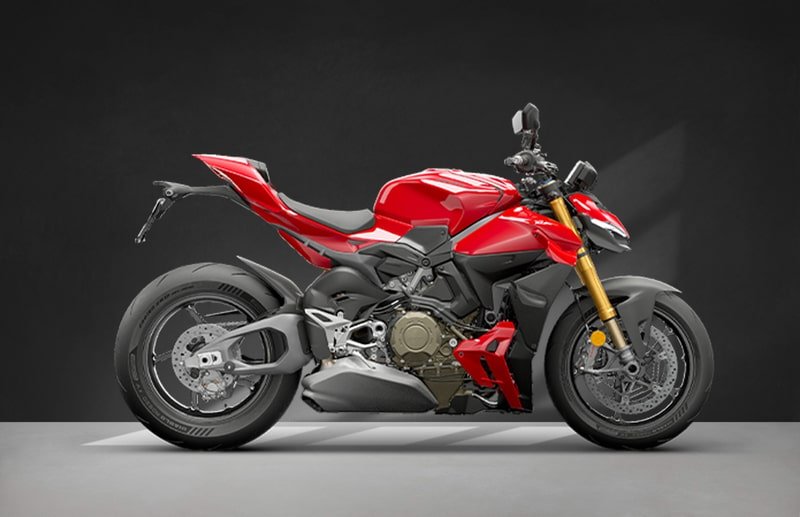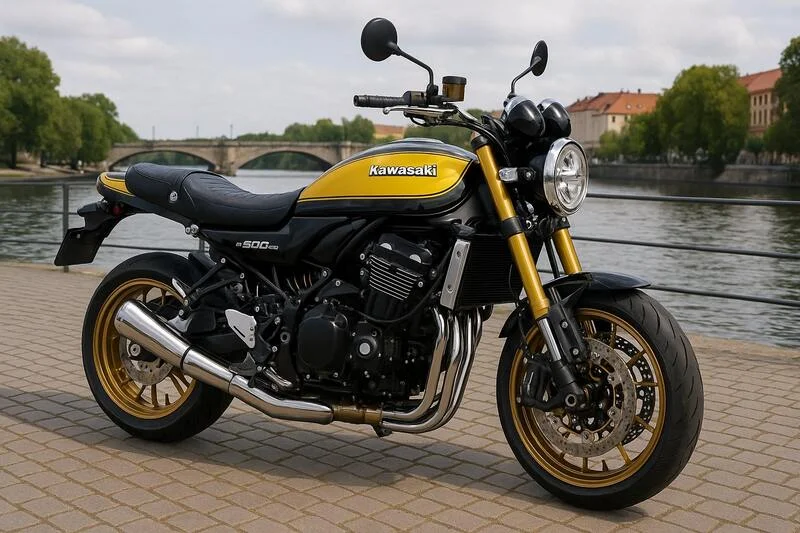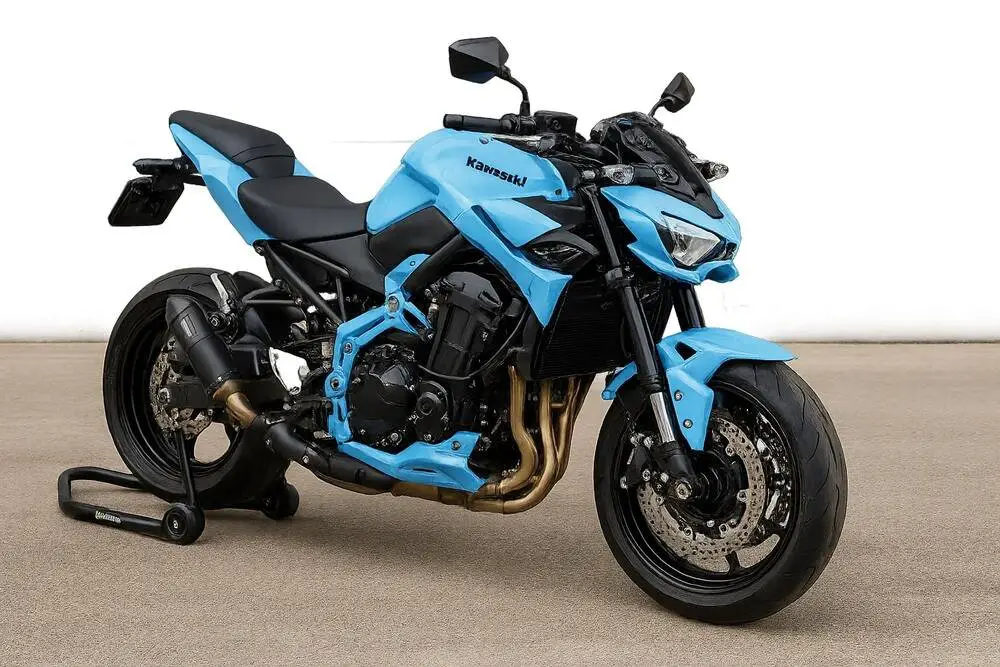Kawasaki Ninja ZX-10R: The Ultimate Track Weapon Unleashed
Introduction to the Kawasaki Ninja ZX-10R
The Kawasaki Ninja ZX-10R has earned its title as a legendary superbike. Known for its race-bred engineering and championship pedigree, the ZX-10R sits proudly at the intersection of street-legal sportiness and track-level dominance. With the 2025 iteration, Kawasaki continues to refine this monster machine, blending raw power with cutting-edge electronics and aerodynamics to keep it ahead of the competition.
Whether you're a professional racer or an adrenaline-hungry rider, the ZX-10R offers an unmatched combination of speed, control, and reliability. Let’s explore what makes this superbike a favorite among thrill-seekers and racing purists worldwide.
A Look Back: History of the ZX-10R Line
Evolution from Early Generations to the Present
First introduced in 2004, the ZX-10R was Kawasaki’s answer to the ever-evolving liter-bike wars. Since then, the bike has seen numerous upgrades in chassis design, electronic aids, and engine output. The focus has always been clear: dominate both the racetrack and the road.
Racing Legacy in WSBK and MotoGP Influence
Kawasaki’s consistent dominance in the World Superbike Championship (WSBK), especially with riders like Jonathan Rea, has had a direct influence on the ZX-10R’s development. Lessons learned on the track are integrated into the production model, giving everyday riders access to elite performance features.
Design and Aerodynamics
Sharp Fairings and Winglets
One look at the ZX-10R, and its aggressive stance is evident. The aerodynamic bodywork isn’t just for show—it significantly reduces drag while providing downforce. Integrated winglets in the front fairing help keep the front wheel grounded during hard acceleration.
LED Lighting, Wind Tunnel Optimization
The front LED headlights are compact yet powerful, giving the bike a modern edge. Every angle and panel has been shaped in a wind tunnel to ensure maximum aerodynamic efficiency, helping the ZX-10R slice through the air effortlessly.
Engine and Performance Specs
998cc Inline-Four Engine
At its heart, the ZX-10R features a 998cc inline-four engine, meticulously engineered for explosive acceleration and high-revving thrills. The engine is equipped with finger-follower valve technology and titanium intake valves, allowing it to breathe better and rev higher.
Horsepower, Torque, and Acceleration Stats
The 2025 model delivers an impressive 203 hp (213 hp with RAM air) and 115 Nm of torque. With a 0–100 km/h sprint in under 3 seconds and a top speed nearing 300 km/h, this bike is no toy—it’s a missile on wheels.
Engine Enhancements for 2025 Model
The latest updates include improved cooling channels, reduced engine friction, and a revised exhaust system for better mid-range performance. These refinements make the engine not just more powerful but also smoother and more efficient.
Chassis and Handling Characteristics
Twin-Spar Aluminum Frame
Kawasaki uses a lightweight twin-spar aluminum frame that’s both rigid and flexible where needed. This architecture allows for pinpoint handling, making it a joy to flick through corners.
Adjustable Suspension and Ride Dynamics
Fully adjustable Showa Balance Free Forks and a horizontal back-link rear suspension deliver track-focused feedback and supreme ride comfort. Riders can fine-tune settings to match personal preference or track conditions.
Electronics and Rider Aids
Kawasaki Intelligent Braking System (KIBS)
KIBS provides precise braking control, minimizing rear-wheel lift and ensuring smooth deceleration even in aggressive braking scenarios. This system is race-proven and track-tested.
Launch Control, Quick Shifter, and Ride Modes
Riders can choose from several riding modes—Sport, Road, Rain, and custom settings. Kawasaki’s launch control system helps optimize starts during race conditions, while the bi-directional quick shifter allows clutchless upshifts and downshifts.
Integrated Smartphone Connectivity
Through Kawasaki’s Rideology app, riders can connect their smartphones to monitor ride stats, adjust settings, and even log lap times, adding a high-tech dimension to the ZX-10R experience.
Track vs Street Performance
Ergonomics for Racing vs Daily Use
The ZX-10R’s aggressive ergonomics suit track riders best—lower handlebars, high rear-sets, and a forward-leaning position optimize body placement during high-speed cornering. That said, with some tweaks, it can be made relatively comfortable for street use as well.
Real-World Feedback from Track Riders
Track-day enthusiasts and professional racers consistently praise the ZX-10R for its stability at high speeds, quick direction changes, and confidence-inspiring braking. It's a machine that feels at home on circuits like Phillip Island and Silverstone.
Comfort and Ergonomics
Seat Design and Riding Triangle
The ZX-10R isn’t designed for cruising comfort—it’s purpose-built for performance. The rider triangle (handlebars, seat, and foot pegs) positions you aggressively over the tank, ideal for weight distribution during cornering. The seat itself is narrow and firm, supporting control over long sessions but may feel stiff for casual riders.
Heat Management and Wind Protection
Despite its race-tuned nature, Kawasaki has thoughtfully included heat deflectors and optimized airflow to minimize discomfort during slow city rides. The aerodynamically designed windscreen deflects wind efficiently at high speeds, reducing rider fatigue and improving high-speed stability.
Braking and Safety Systems
Brembo Brakes and Cornering ABS
The ZX-10R is equipped with Brembo M50 monobloc calipers and 330mm discs, offering phenomenal stopping power. Combined with cornering ABS powered by a Bosch IMU, it ensures precise braking even while leaned over in curves, boosting both safety and confidence.
Rider Confidence and Safety Enhancements
Features like engine brake control, wheelie control, and rear-wheel lift mitigation help keep the ZX-10R composed under aggressive riding. For less experienced riders, these aids act as safety nets; for veterans, they’re tools for refining lap times.
Tires, Wheels, and Grip
OEM Tire Options and Recommended Upgrades
Stock ZX-10Rs often ship with Bridgestone Battlax RS11 or Pirelli Diablo Rosso Corsa tires—both excellent for street and occasional track days. For dedicated racers, upgrading to slicks like the Pirelli Supercorsa or Dunlop Sportmax GP-A Pro brings noticeable gains in grip and handling.
Traction and Feedback at High Speeds
The tire and wheel setup ensures tremendous grip at high lean angles. Coupled with Kawasaki’s traction control system, it allows aggressive corner entry and mid-corner throttle application without fear of losing control.
Fuel Economy and Range
Real-World Mileage and Tank Size
With a 17-liter fuel tank, the ZX-10R offers a reasonable range, especially for a liter-class superbike. Riders report around 14–16 km/l in regular use and 10–12 km/l during aggressive riding. On a full tank, expect a range between 200–250 km depending on throttle discipline.
Fuel Mapping Options
Riders can switch between different power modes—Full, Middle, and Low—to manage fuel consumption and power delivery. These modes also influence throttle response and engine braking behavior.
Price, Variants, and Availability
ZX-10R vs ZX-10RR Comparison
The ZX-10RR is a race-homologated variant of the ZX-10R, featuring lighter forged wheels, a higher rev limit, and performance upgrades designed for WSBK use. While the ZX-10R suits track enthusiasts and street riders alike, the RR is better suited for competitive racing.
Global Market Pricing (India, US, UK)
-
India: ₹16.50 – ₹17.00 lakh (ex-showroom)
-
USA: Around $17,000 USD
-
UK: £16,000 – £17,500
Despite the premium pricing, the ZX-10R is considered one of the best value-for-money superbikes due to its race-proven hardware.
Customization and Aftermarket Upgrades
Exhausts, ECU Remaps, and Carbon Parts
Popular upgrades include Akrapovič or SC Project exhausts to enhance performance and sound, ECU remaps for removing restrictions, and lightweight carbon fiber parts for improved power-to-weight ratio.
Track-Day Setup Enhancements
Many owners invest in rearsets, clip-ons, race fairings, and even upgraded suspension for track use. With such modifications, the ZX-10R transforms into a competitive track machine capable of sub-2 minute laps on professional circuits.
Comparison with Rivals
Yamaha R1, BMW S1000RR, Ducati Panigale V4
Each of these liter-class superbikes has its own strengths:
-
Yamaha R1: Excellent electronics and high-revving engine
-
BMW S1000RR: Inline-four with ShiftCam tech and great electronics
-
Ducati Panigale V4: Unique V4 engine, exotic styling, higher price
ZX-10R’s Unique Selling Points
Where the ZX-10R shines is in its track-ready ergonomics, proven race lineage, balanced electronics, and high value-for-money proposition. It might not be the flashiest, but it’s ruthlessly efficient and engineered to win.
User Reviews and Expert Opinions
Pros and Cons Highlighted by Owners
Pros:
-
Race-derived performance
-
Confidence-inspiring electronics
-
Durable and reliable even under stress
-
Excellent braking and suspension setup
Cons:
-
Not beginner-friendly
-
Less comfortable for long-distance touring
-
Subtle styling updates in recent years
Magazine and YouTube Reviews Summary
Experts from publications like Motorcycle News, Cycle World, and VisorDown consistently praise the ZX-10R for its rideability, track prowess, and price-to-performance ratio. YouTubers frequently cite its “predictability” and “confidence-inspiring nature” as reasons to prefer it over more aggressive options.
Legal Compliance and Emissions
Euro 5 Compliance and Future Readiness
The ZX-10R complies with Euro 5 emissions standards without compromising performance, thanks to updated catalytic converters and refined fuel mapping. Kawasaki has also ensured it remains ready for upcoming global regulations.
Is the ZX-10R Right for You?
Beginners vs Experienced Riders
This is not a beginner bike. It demands skill, focus, and respect. However, for seasoned riders ready to step up to a liter-class machine, the ZX-10R offers a potent yet manageable entry into superbike territory.
Street Riders vs Track Enthusiasts
While street-legal and usable for short rides, the ZX-10R’s true potential comes alive on the track. If you’re a weekend track warrior or amateur racer, it delivers everything you need without the extreme costs of Italian or German counterparts.
Frequently Asked Questions (FAQs)
1. What is the top speed of the Kawasaki Ninja ZX-10R?
It can reach top speeds of around 299 km/h (186 mph) under optimal conditions.
2. Is the ZX-10R good for daily commuting?
While possible, its aggressive ergonomics and heat output make it less practical for daily use compared to naked bikes or sport-tourers.
3. What’s the difference between the ZX-10R and ZX-10RR?
The RR is a race-homologated version with lighter components and a higher rev limit, intended for competitive track use.
4. Can the ZX-10R be used on long road trips?
Yes, but with limitations. The hard seat and sporty riding position can be fatiguing. Some riders use tank bags and tail bags for touring setup.
5. How does it compare to the Yamaha R1?
The ZX-10R offers a more linear power delivery and slightly more approachable electronics suite, while the R1 feels more aggressive and race-focused.
6. Is it worth upgrading the exhaust?
Absolutely. Aftermarket exhausts not only reduce weight but significantly improve sound and throttle response.
Conclusion: Final Thoughts on the ZX-10R
The Kawasaki Ninja ZX-10R is more than just a superbike—it's a refined race machine built for riders who demand performance, precision, and pedigree. With consistent WSBK success backing its evolution, the ZX-10R continues to dominate both the spec sheet and the racetrack.
If you're looking for a track-focused bike that doesn't compromise on street legality or technological sophistication, the ZX-10R is a stellar choice. It's not just fast—it’s engineered for victory.




